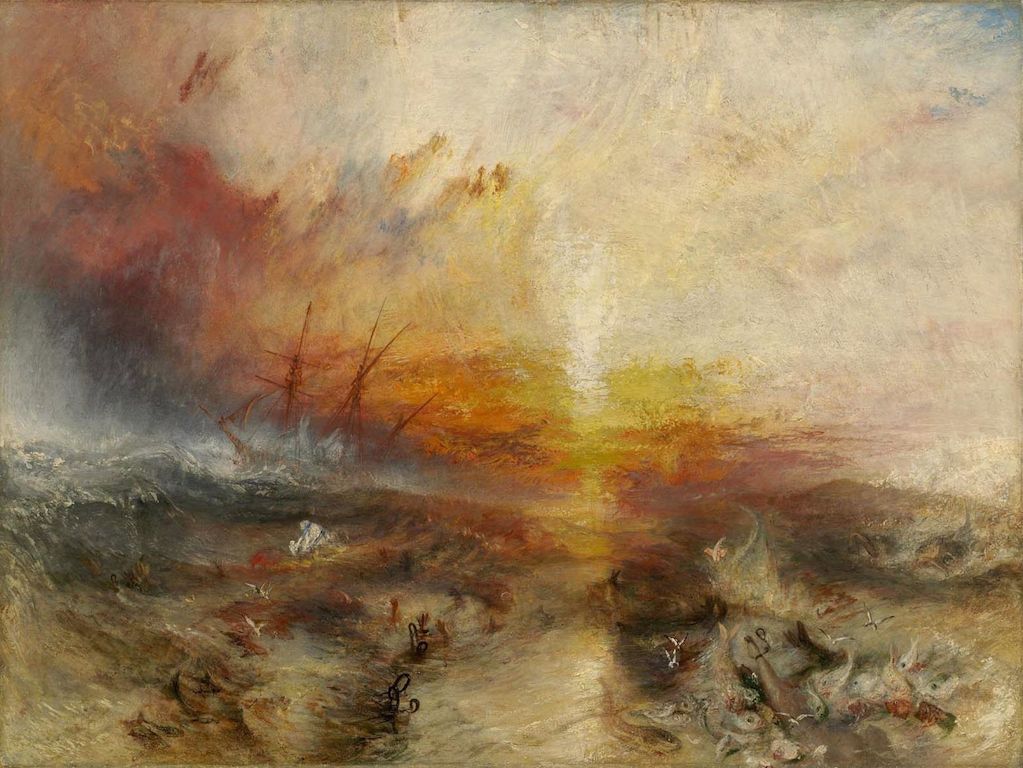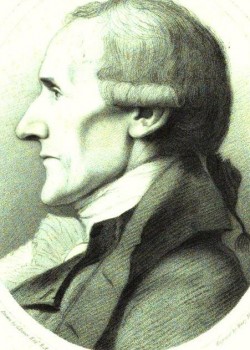
J. M. W. Turner's representation of the mass murder of slaves, inspired by the Zong massacre
Professor finds and publishes lost 233-year-old letter condemning slave massacre
British Library unaware it had Granville Sharp’s 1783 missive on the Zong massacre until University of Manitoba professor inadvertently discovers it
233 years ago Granville Sharp argued that black lives matter. But for 233 years the true sentiments of Britain’s leading abolitionist were lost, until a University of Manitoba professor accidentally came across them in the British Library.
Michelle Faubert recently published a scholarly article about her discovery, its significance, and a novel argument that Sharp intended to publish his letter, which would have been quite a daring feat of public dissent against his contemporaries.
It all began a few years ago in the Rare Book Room of the British Library. Faubert was perusing a volume of “comparatively unimportant pamphlets” from the 18th century, when the professor saw something unusual – beautiful handwriting.
“I thought, Why is this beautiful handwriting in with this book of published [pamphlets]?… I just couldn’t believe it. I could hardly keep still. I knew I was on to something,” Faubert says.
The Romantic literature professor from the department of English, film and theatre flipped through the handwritten manuscript’s 15 pages and saw “Granville Sharp, 1783,” written at the end; the first page revealed the letter was about the massacre aboard the slave ship Zong. Sharp was a leading British abolitionist and his letter was crammed between published pamphlets on diseases, vaccinations, and the healing benefits of water, all bound in volume titled “Tracts 35.” The compilation of these documents together didn’t make sense. Faubert was flabbergasted.
“I immediately began searching through the library’s online catalogues, trying every search term I could think of to see if the library knew about this letter written by this super-important abolitionist about this super-important case in the history of abolition, but I couldn’t find it,” she says.
Faubert contacted some of the library’s archivists and, indeed, they did not know the letter was in their collection.
“It’s not that they aren’t excellent librarians,” Faubert is quick to say. “It’s that the British Library has 57 million items. There are always going to be these discoveries found in their collections – which is why it’s so important that scholars do work on archival, hard-copy items and not just trust a page scan.”
To be clear, Faubert’s discovery is not the original letter. That is lost, perhaps even destroyed by the Lords Commissioners of the Admiralty to whom Sharp was writing, demanding murder charges be brought against the crew of the slave ship Zong for killing 132 slaves by throwing or forcing them overboard in 1781. The crew rationalized the act by viewing the slaves as cargo, thereby making the slave owners eligible for insurance compensation.
England’s National Maritime Museum has the only other copy of Sharp’s letter but, as Faubert argues, it’s a draft, given that it’s littered with editing marks. The fair-copy Faubert found is likely closer to the original, she contends, offering a better reflection of what Sharp officially wrote to the Admiralty on this matter.
“The real question is, Why did someone put this historically vital manuscript letter in with much less-important published documents and therefore assign it to historical burial? And it probably would have remained buried had I not discovered it,” she says.
Previous to Faubert’s discovery, the only widely available version of Sharp’s letter to the Admiralty was a transcription of it, published in Memoirs of Granville Sharp (1820) by Prince Hoare. Hoare, however, omits the expressive language you see in both the National Maritime Museum’s and the British Library’s copy: Sharp sometimes uses four exclamation marks and underlines many expressive phrases, sometimes three times!!!! He’s clearly passionate, but Hoare published the text without the formatting features that reveal Sharp’s exciting personality.
“[Hoare’s transcription] gives us an image of a Granville Sharp who is staid and almost relaxed and coldly observant,” Faubert says. “And these other copies show that is simply not the case.”
Faubert has rectified this misperception about Sharp and his letter to the Admiralty in her recently published article, “Granville Sharp’s manuscript letter to the admiralty on the Zong massacre: a new discovery in the British Library,” in the journal Slavery & Abolition.
And she will publish a new, accurate transcript of this missive, which will appear as an appendix in her upcoming book, providing even greater insight and discussion of this historically important letter.
After 233 years, Sharp’s arguments will be read as he wanted them to be.
Research at the University of Manitoba is partially supported by funding from the Government of Canada Research Support Fund.









Thanks for this fascinating story! Also it is an argument for not destroying all printed archives in favour of digitalization. LAC, are you listening?